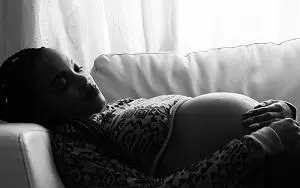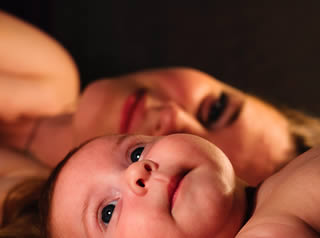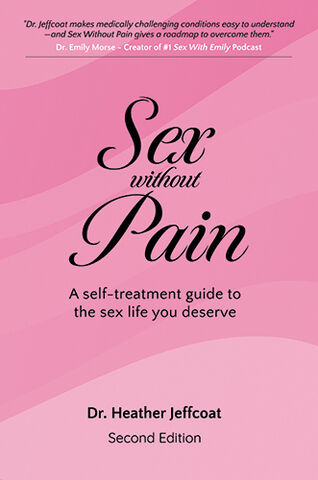
The Femina Physical Therapy Blog
Featuring original articles by our staff about current events and trends
Explore our insightful blog articles on pelvic health, where we delve into essential topics that empower and educate. From understanding pelvic floor disorders to strategies for conquering infertility, our content is designed for those seeking knowledge and support. We discuss the latest research, expert advice, and practical tips to enhance your well-being and foster a deeper connection to your body.
Featured From the Blog:
- Details
- 5420 Views

What is babywearing?
Babywearing is the practice of transporting a baby or child in a sling or carrier that is worn on the body - a practice that has existed for generations, and has been observed across many different cultures.
What are the benefits of babywearing?
In the first few months of an infant's life, it is required of caregivers to perform many hours of carrying, a task that may be daunting if there are other children in their household that need caring for, or other responsibilities within the home that need tending to. Of course babywearing allows caregivers to be physically close to the baby while remaining hands free, but not only this, babywearing has also been shown to have emotional, physical and psychological benefits for both infant and mother. For the infant, maternal carrying of the offspring has been shown to trigger a calming response demonstrated by central, motor and cardiac signals in distressed infants.1 There is also research to support that can improve length and success of breastfeeding, improve infant temperature regulation, and sleep apnea.
Read more: Babywearing 101: Benefits, Challenges, and Solutions for...
- Details
- 4774 Views

What's the Link Between Urinary Incontinence and Postpartum Depression?
Postpartum Depression is a medical illness that negatively affects how you feel, the way you think, and how you act.
It typically arises due to a combination of hormonal changes, psychological adjustment to motherhood, and fatigue. Postpartum depression is said to affect between 5-20% of mothers depending on variable socioeconomic factors. Many people associate urinary incontinence as a common postpartum symptom. Prevalence of postpartum urinary incontinence figures vary due to diverse study formats, however it is predicted that bladder leakage is experienced in a quarter to half of all postpartum women.
In recent years, studies have concluded there is a strong link between both postpartum depression and urinary incontinence postpartum.
Read more: Commonly Linked: Urinary Incontinence and Postpartum...
- Details
- 6261 Views

During pregnancy, the body goes through tremendous changes that can significantly impact strength, endurance, and ability to absorb ground reaction forces that are required to safely return to running. Your growing belly changes your posture, your hormones are making your joints more flexible, and some amount of deconditioning is expected and normal as pregnancy progresses.
For most postpartum runners, their return to running following birth can be intimidating and overwhelming.
Read more: Blog: A Safe Return to Running and Impact Activities in...
- Details
- 6929 Views

Therapeutic Breast Massage in Lactation Can Help Make Breastfeeding Less Painful
Breastfeeding is widely accepted as the normal standard for providing nutrition to newborns, however, many women who do not reach their breastfeeding goals. US national data stated that breast pain was a commonly reported reason for women weaning less than 1 month postpartum. Within that segment, 29% of women who participated in the study stated that “breastfeeding was too painful” to continue.
In the same study, 24% of women reported “breasts feel(ing) too full or engorged” as another reason to discontinue breastfeeding prior to 1 month postpartum.1 Currently, The American Academy of Pediatrics recommends exclusive breastfeeding of infants for the first six months of life. As physical therapists who treat patients with postpartum conditions, we are well positioned to make a big impact on patients with breastfeeding related pain and reduce barriers to continued breastfeeding!
- Details
- 33773 Views

Let's Look at the Effects of Pelvic Floor Muscle Strength on Orgasm
Hint: strong pelvic floor muscles = strong orgasm
The world is learning more and more about the pelvic floor and the many ways that it can be treated. At Femina Physical Therapy, we have spoken about pelvic rehab for urinary, bowel, birth, pregnancy, bladder, erectile issues, and many more. But we all know the question that everyone wants answered: Does pelvic floor strength affect orgasm?
Well reader, you came to the right place.
Read more: The Effects of Pelvic Floor Muscle Strength on Orgasm
- Details
- 4823 Views

What are Pelvic Organ Prolapse and Urinary Incontinence?
What is the biggest risk factor for both conditions? And how can you tell if you have them?
Not sure? You’re not alone. In fact, one research study found women actually know more about erectile dysfunction than they do about pelvic organ prolapse! While pharmaceutical company advertising bias may be to blame for part of that equation, one of the largest surveys of pregnant women and new moms ever conducted on the subject (by a team of medical experts in New England) reveals women’s healthcare providers consistently miss their biggest window of opportunity to educate patients about these conditions and offer treatment strategies that work.
Read more: POP Quiz About Two Common Postpartum Conditions - Pelvic...
- Details
- 6015 Views

What causes incontinence during pregnancy?
There are many causes for incontinence during pregnancy and postpartum. Some of the proposed factors are:
- hormonal changes,
- pelvic floor muscle and connective tissue modifications,
- bladder neck widening (due to the weight of both the uterus and the growing fetus),
- anatomical injuries during delivery.1, 2
A hormone called relaxin is produced during pregnancy to help soften the muscles and ligaments in preparation for delivery. As the uterus and baby grow throughout pregnancy more load is placed on the pelvic floor muscles causing the pelvic floor muscles to become weaker.3 Also constipation, which is commonly seen in pregnancy, puts an additional load on the pelvic floor.4 Furthermore, the pelvic floor has additional strain placed on it during labor; the pelvic floor muscle is stretched five times its original length.5
Read more: Incontinence During Pregnancy & Postpartum | Postpartum...












